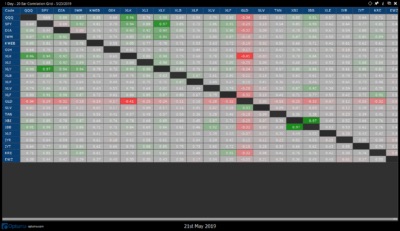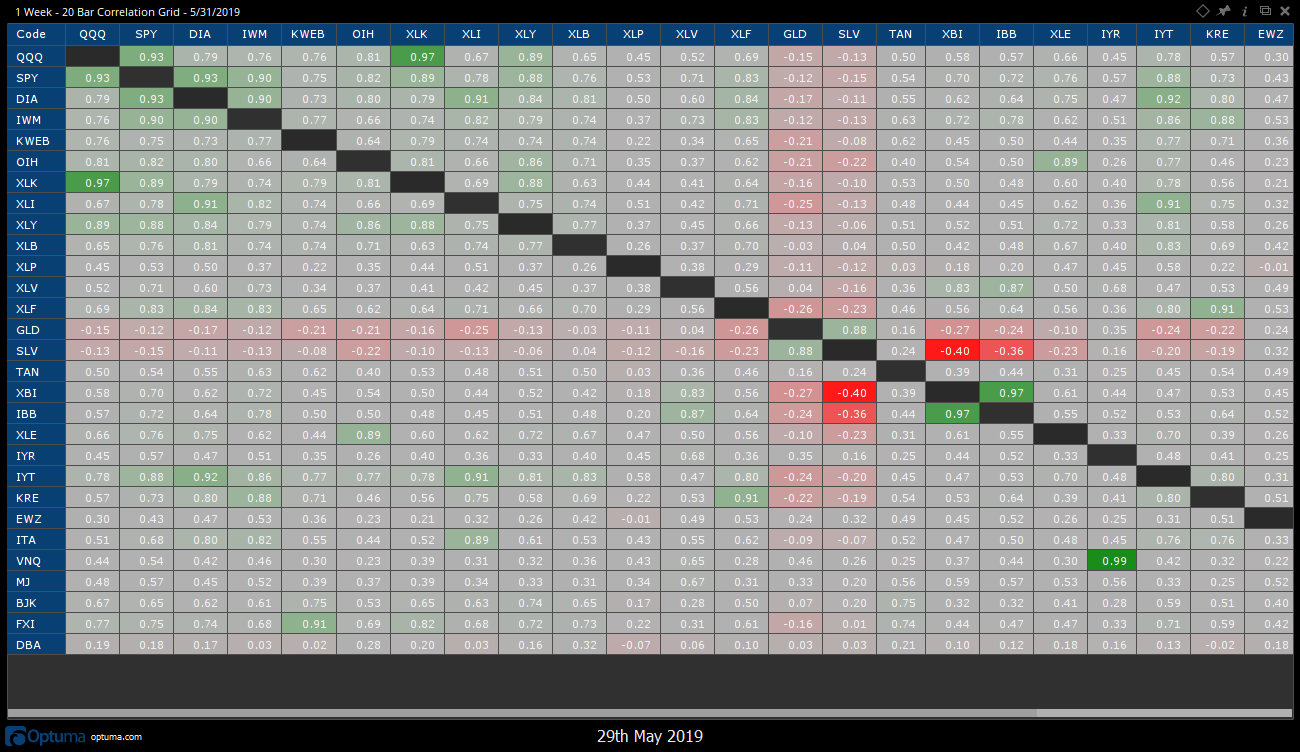Welcome back. Today I wanted to briefly touch on an analytical tool that I use to build out my own personal long term portfolio. As you are aware, the majority of posts on this site deal with short term trades otherwise known as speculation. We use technical tools and probability theory in order to attempt to profit from short term gyrations in markets. While some of these same tools can be of use in building a long term portfolio, many of them are going to be the antithesis of analysis when it comes to investing.
Over the holiday weekend I took the extra time off to reread an old classic by Fred Schwed Jr.: Where Are The Customer’s Yachts?

This book has been a go to for me every couple of years, especially when I get the urge to go in and tinker with my long term portfolio. I spend my days analyzing daily, and more recently intraday charts, so it aids me in zooming out to remind myself why I invest in the first place. In this classic, Schwed has a quote that sums up the difference between speculating and investing,
“Speculation is an effort, probably unsuccessful, to turn a little money into a lot. Investment is an effort, which should be successful, to prevent a lot of money from becoming a little.”
I agree 100 percent with both parts of that statement. Almost all speculators I know do not succeed in turning a little money into a lot.
Investment most definitely is an effort to ensure a lot of money does not become a little.
I have spent quite a bit of time talking about why speculators most always fail in their endeavor to go from rags to riches, and I will continue to do so. I haven’t spent as much time talking about investing on this site because well, it’s boring.
It involves buying and holding assets for 10,15,20,50 years. It involves the NOT doing more so than the doing. It involves understanding that your time frame and amount you can afford to save trumps individual stock selection. In fact, most self directed investors shouldn’t even bother picking stocks. They would be better off in an index, low cost mutual fund or ETF. In short, the more you DO when it comes to investing the further behind you will fall. Actively trading a long term account is actively engaging in a form of senseless mental masturbation. I hope it feels good because it won’t last long.
Should you decide to self direct, as far as I would personally go is starting with a portion of your overall portfolio. Then instead of individual stock selection I would put together a list of ETFs and Index funds to choose from. Once you have those, you can make use of an analytical tool called a Correlation Matrix that you can find in a number of platforms including Excel. My preferable platform for this is Optuma.
A sample Correlation Matrix is shown here:

In portfolio construction you have undoubtedly heard the term diversification. Leaving the arguments for or against diversification aside for the time being, I as your fearless leader will help…
You probably want to diversify. Especially as your retirement years draw near. The most of you won’t be able to stomach an all equities portfolio so for now let’s just trust old Omaha and accept the fact you will want to diversify.
Now for a 3 sentence course on correlation:
Correlation is how closely (positive or negative) two variables (in our case asset classes) are moving together. There are different mathematical formulas to measure the strength of correlation and the one we will use ranges from (-1.0 – 1.0). If two assets show a -1.0 correlation they are perfectly inversely correlated, if they show a 1.0 correlation they are perfectly positively correlated and if they show 0 then they are not at all correlated.
So how does the above matrix help us? Let’s assume you are 10 years out from your planned retirement and have thus far enjoyed the risk adjusted returns from a mostly big cap equities portfolio. Your financial adviser at your semi annual meetup suggests that you may want to begin to diversify into other assets with a lower risk profile with a portion of your portfolio.
Knowing that you have an overweight big cap equities portfolio, we can assume the DIA (Dow Jones Industrial Average ETF) is a good barometer of your holdings. We want to try and balance this out to decrease the overall volatility and maximize returns by investing in different areas that would each react differently to the same event.
How would we manage this? We have some ideas we are interested in but how can we know what will help balance the portfolio overall? This comes down to understanding correlation, and our Correlation Matrix does the heavy lifting for us. Let’s take a look again:

Let’s say our original idea was to take a portion of our portfolio and invest in China stocks. Would this be a good idea if our goal is to diversify?
No it would not. How do we know? Simple: We can go to the 4th column from the left which is our DIA ETF and follow it down until we get to the second to last row from the bottom. Here is where the cross of DIA and China’s FXI meet to show us a correlation of +.74. This is a strong correlation calculated using the past 20 weeks. While we are in theory diversifying away from a 100% US Equity Portfolio, we are putting money into another bucket that is going to move much the same as what we already have. Back to the drawing board…
Maybe our idea is to rotate some of our big cap equity portfolio into a Marijuana / Cannabis fund to take part in the early stages of the boom. How good of an idea is this? Going to our correlation grid under the DIA column we can follow the table down until we come to MJ (Alternative Harvest ETF). The table shows the DIA/MJ 20 week correlation is +.45. That is much better than the FXI idea, but I still think we can do better.
The goal here is to find the asset class or group that is either negatively correlated or not correlated at all (number close to 0). Starting from the top and looking down the entire list of choices available in the example grid, we can see GLD and SLV have a slightly negative correlation to DIA, and DBA which is an agriculture fund has a low positive correlation to DIA. Those would be the ticket in helping balance out our portfolio.
This is one way that a simple tool, albeit powerful can assist us in building model portfolios for the long term. Correlations are ever changing, but there are some that have stood the test of time and will continue to do so.
Remember that with investing the goal is to prevent a lot of money from becoming a little over a time frame that is important to us individually. It’s simple but it’s not easy.
That is why it’s hard to find all those customers’ yachts.
Trent J. Smalley. CMT
